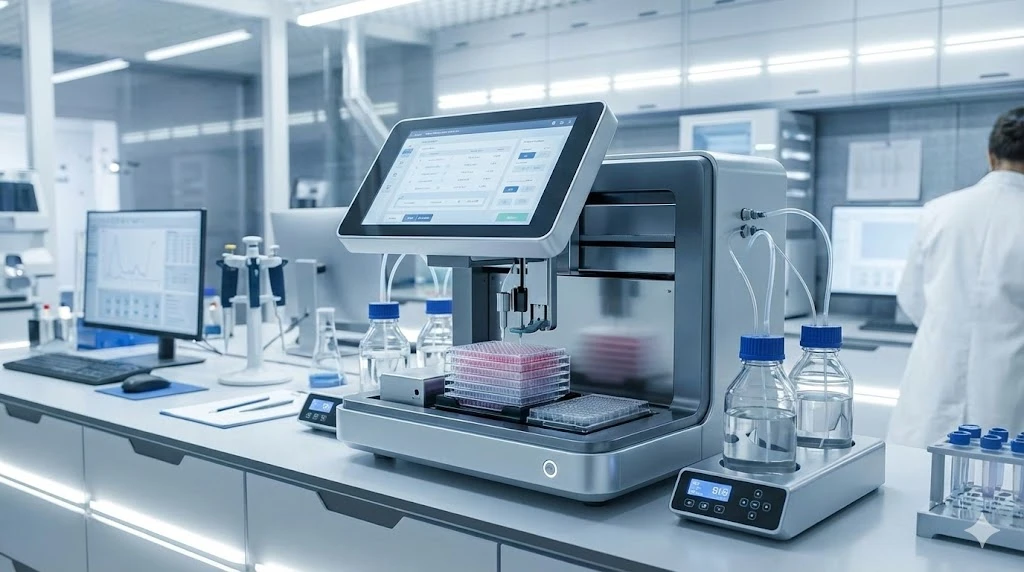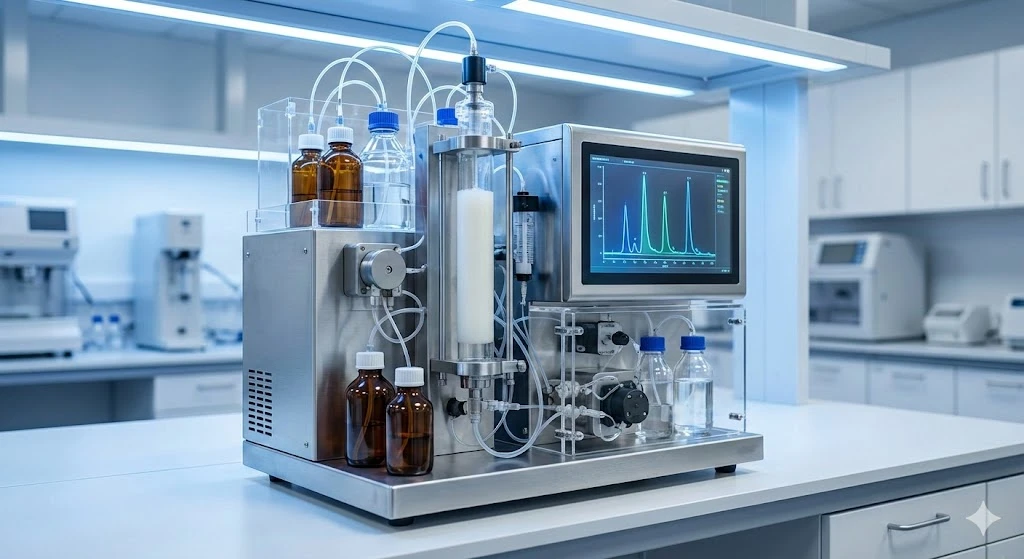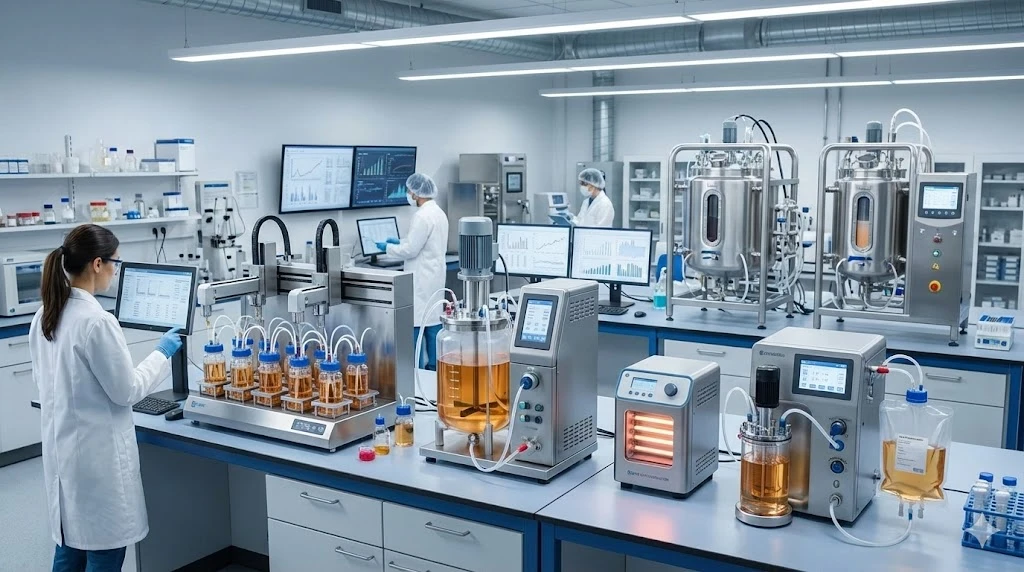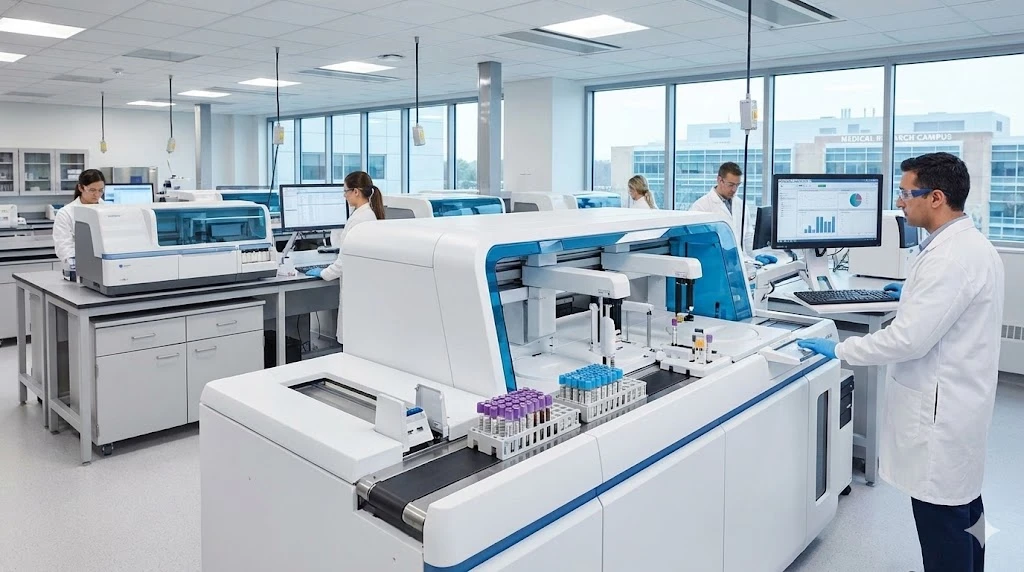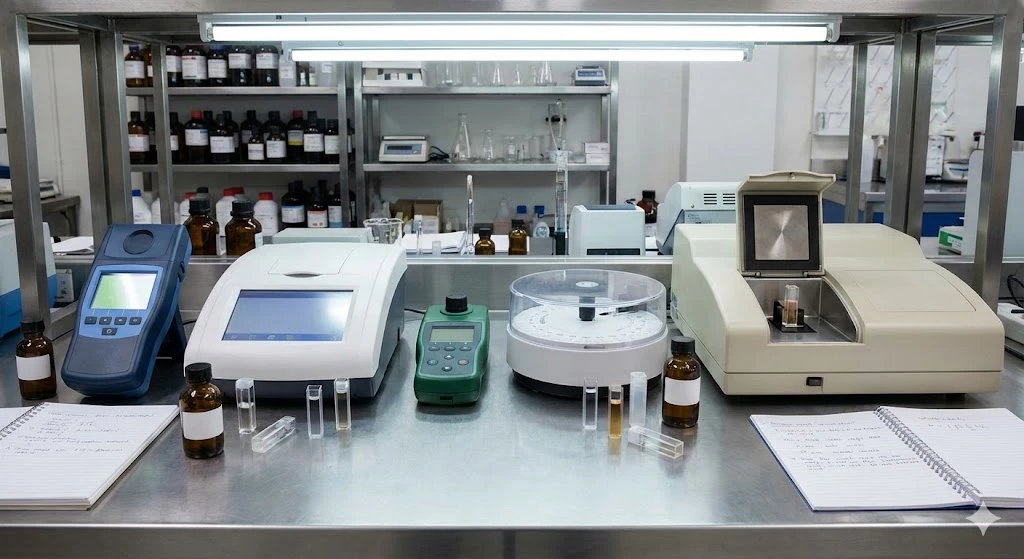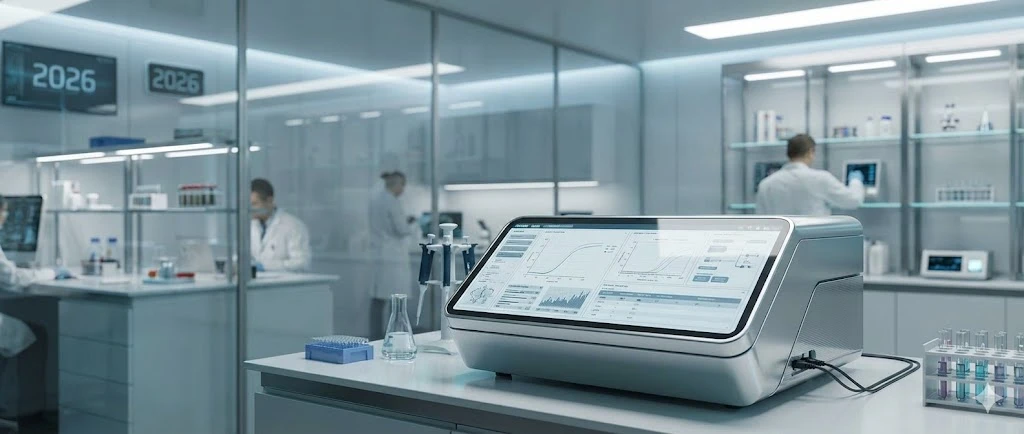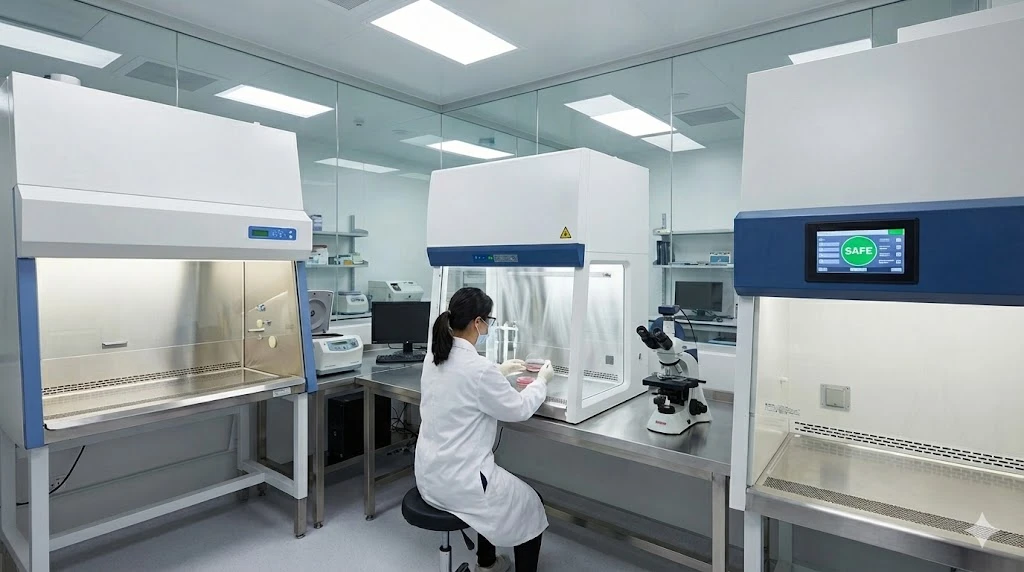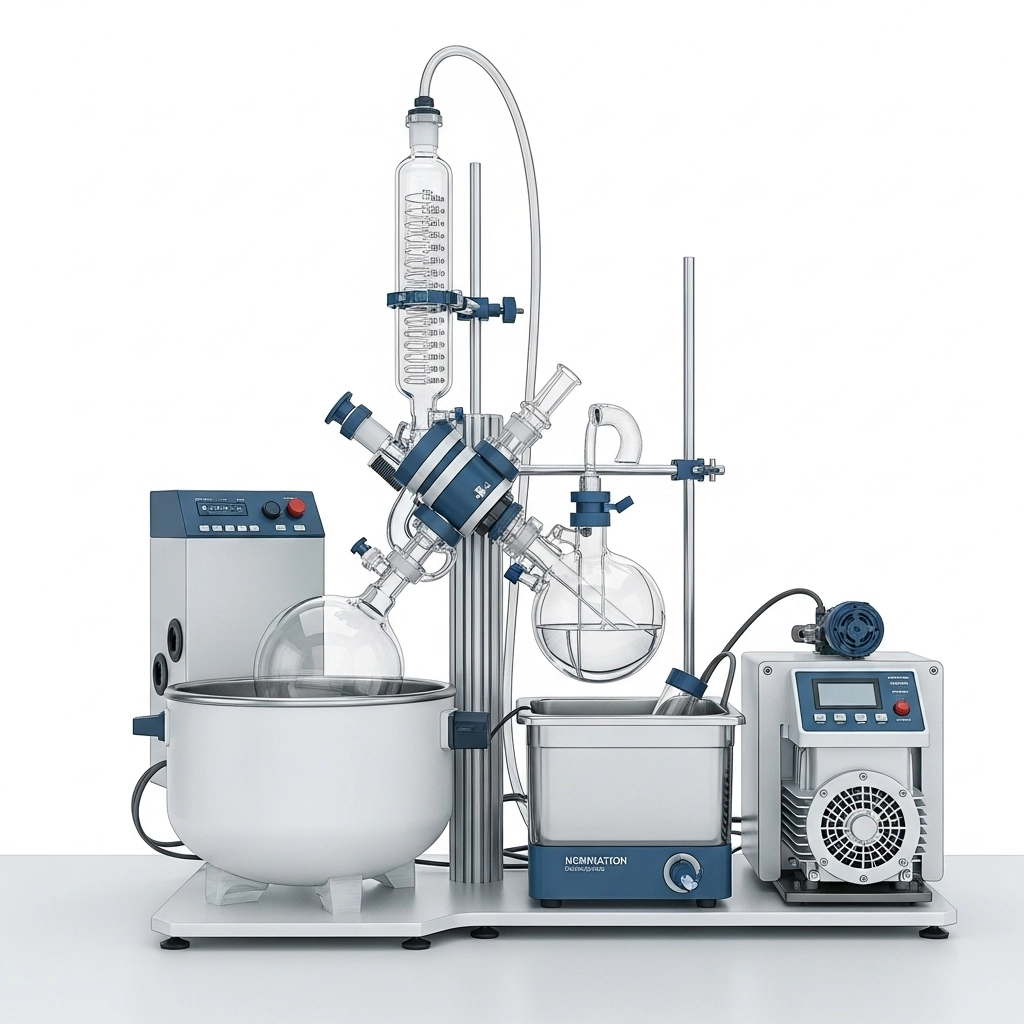
ImageFX (2025)
In the fast-paced world of scientific research and development, efficient sample preparation is paramount. Often overlooked but undeniably critical, laboratory evaporation systems are the unsung heroes behind countless successful experiments, from proteomics research to biosynthesis. These devices serve a universal purpose: to gently and effectively remove unwanted solvents, leaving your valuable sample analyte intact and concentrated. While the underlying chemistry and specific methods can vary, the core objective remains consistent – precision solvent removal.
Understanding the different types of evaporators available and their unique strengths is key to optimizing your lab's workflow and ensuring the integrity of your samples. This guide will delve into the most common evaporation technologies, helping you make an informed decision for your specific application needs.
Rotary Evaporators Explained: Principles, Components, and Applications
Rotary evaporators, commonly known as "rotovaps," are a staple in many laboratories for the gentle and efficient removal of solvents from aqueous samples. These versatile systems range in size from compact analytical benchtop units to large-scale 20-50L process models, catering to diverse research demands.
A typical rotovap system comprises several key components working in concert:
Vacuum System: Essential for lowering the pressure within the evaporation chamber, which reduces the boiling point of the solvent.
Heated Bath: Provides controlled heat to the sample vessel, facilitating vaporization.
Condenser: Often featuring a "cold finger" or coil, this component cools and condenses the removed solvent vapor.
Condensate-Collection Vessel: Gathers the condensed solvent, removing it from circulation.
Motorized Rotary Unit: Rotates the sample vessel, increasing the surface area for evaporation and preventing bumping.
Motorized Lift: Allows for easy raising and lowering of the sample vessel into and out of the heated bath.
The fundamental principle behind rotary evaporation involves lowering the system pressure below the liquid sample's vapor pressure, causing the solvent to boil and vaporize at a lower temperature. The heated bath assists this process, with both vacuum and heat settings adjustable to suit the specific application and sample type. The condenser, cooled by a circulating liquid or dry ice, then cools the vapor, causing it to condense back into liquid form, which is collected in the condensate vessel.
Rotovaps excel at removing solvents with significantly lower boiling points than the target analyte. This difference in vapor pressure is crucial to prevent co-evaporation and potential loss of the desired sample product. However, this also highlights a limitation: for applications requiring the removal of high-boiling point solvents or where co-evaporation is a significant concern, alternative techniques may offer superior performance.
Centrifugal Evaporators: Ideal for Sensitive Samples and High-Throughput Labs
Centrifugal evaporation devices, often referred to as "speedvacs" or "lyophilizers," are ubiquitous in life science laboratories due to their distinct advantages, particularly when dealing with temperature-sensitive or multiple samples. These systems offer significant improvements over traditional rotovaps in specific scenarios.
Key differences and advantages of centrifugal evaporators include:
Batch Processing Capability: Unlike rotovaps that typically process one sample at a time, centrifugal evaporators can handle numerous samples simultaneously, often in microtube or microtiter plate formats, dramatically increasing throughput.
Low-Temperature Solvent Removal: A critical advantage is their ability to efficiently remove high-boiling point solvents while maintaining a low sample temperature. This feature is invaluable for preserving the integrity of delicate analytes such as proteins, enzymes, and nucleic acids that are susceptible to degradation from heat.
Unique Evaporation Mechanism: This low-temperature capability is achieved because the centrifugal force generated by the spinning rotor creates a pressure gradient within the liquid sample. This gradient causes the sample to boil from top to bottom. The denser analyte material remains captive at the bottom of the vessel, allowing the less dense solvent at the top to vaporize efficiently. This mechanism minimizes the risk of co-evaporation, making them ideal for stringent applications like concentrating aqueous peptide solutions after mass spectrometry.
For labs requiring high throughput, gentle handling of sensitive biological samples, and efficient removal of a broader range of solvents, centrifugal evaporators present a powerful and precise solution.
Gas Vortex Evaporation: Vacuum-Free Solvent Removal for Lab Efficiency
A third distinct type of evaporation system employs blowdown or gas vortex shearing technology. This technique fundamentally differs from vacuum-based methods by facilitating evaporation without the need for a vacuum. Instead, a stream of inert gas is directed over the sample to accelerate solvent removal.
The process typically involves:
Inert Gas Flow: An inert gas, commonly nitrogen, is blown in a helical pattern into the sample vessel, which is usually situated in a heated water bath.
Vortex Action: The helical gas flow creates a vortex action within the sample. This continuous mixing and rinsing of the vessel walls enhance evaporation efficiency.
Vapor Exhaust: Solvent vapor rises from the center of the vortex and is efficiently removed through an exhaust fan, vented to a fresh air outlet.
The advantages of gas vortex shearing systems are notable, especially for specific applications:
Precise Control: These systems often feature integrated microprocessors that electronically control key parameters such as operation time, bath temperature, and gas flow rate. This allows for high-level precision and quality control, ensuring reproducible results.
Unattended Operation & Flexibility: The automated control enables unattended operation, freeing up valuable lab personnel time. Furthermore, these systems offer flexibility, allowing users to pause or stop the process, and make temperature or sample adjustments as needed.
No Vacuum Required: Eliminating the need for a vacuum pump simplifies setup and maintenance, and can be advantageous in environments where vacuum systems are impractical or undesirable.
For rapid, precise, and vacuum-free solvent evaporation, particularly in high-throughput settings, gas vortex shearing technology offers a robust and reliable solution.
Final Thoughts on Evaporation Systems
Laboratory evaporation systems are indispensable tools that underpin a vast array of scientific endeavors. From the ubiquitous rotary evaporator to the precision of centrifugal systems and the innovative vacuum-free gas vortex technology, each type offers distinct advantages tailored to specific laboratory needs. Choosing the right evaporator is not merely about convenience; it's about safeguarding your precious samples, optimizing your workflow, and ensuring the accuracy and reproducibility of your research. Don't let a crucial piece of equipment be an afterthought. Invest in reliability and efficiency from the start.
Explore the full range of high-quality evaporation systems and find the perfect fit for your laboratory's demands today at LabX.
Frequently Asked Questions (FAQ)
What is the primary purpose of a laboratory evaporation system? The main purpose of a laboratory evaporation system is to efficiently and gently remove unwanted solvents from a sample, leaving behind the concentrated analyte material. This is crucial for sample preparation in various scientific applications.
What are the key differences between rotary and centrifugal evaporators? Rotary evaporators (rotovaps) typically process one sample at a time and are best for removing low-boiling point solvents. Centrifugal evaporators (speedvacs) can process multiple samples in batches, excel at removing high-boiling point solvents at low temperatures, and are ideal for sensitive biological samples.
When would a gas vortex shearing system be preferred over a vacuum-based evaporator? A gas vortex shearing system is preferred when a vacuum is not desired or practical, or when rapid, precise, and unattended solvent removal is needed. They are excellent for applications requiring high throughput and controlled evaporation without the complexities of a vacuum system.
How can I choose the best evaporation system for my lab? To choose the best system, consider your sample type (temperature sensitivity, boiling point of solvent), desired throughput (single vs. batch processing), space availability, and budget. Evaluating these factors will help you select the most effective and reliable unit for your specific research needs.


